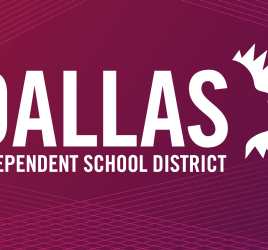
Summer is almost here
Starting in June, the district will be closed on Fridays, and central team members begin to work the summer schedule four-day week from 7 a.m. to 6 p.m.
Employees paid monthly will work the four-day workweek from June 3 through July 26 and resume their regular work hours on July 29.
Employees paid biweekly will work a four-day workweek from June 7 through July 25. Biweekly employees will NOT work on June 7 if they participate in the four-day workweek. Biweekly employees who participate in the four-day workweek will resume their regular hours on July 26.
Employees are responsible for consulting with their supervisor to determine the start, end, and lunch times of their daily work schedule during the summer. Employees approved to take a working lunch will only be required to stay at the worksite or be available remotely for 10 hours. Employees will be compensated for the “working lunch” time, and it will be considered part of the regular work hours.
Supervisors may allow employees to work a schedule other than the four-day workweek so long as the change does not negatively affect the functions of the department. In addition, some departments may choose to return to the regular work schedule sooner than the established date. Decisions regarding the work schedule are at the discretion of the department supervisor. In addition, departmental leadership may modify the employees’ work schedule to meet campus, departmental, or district needs at any time. Any event such as New Teacher Academy or a back-to-school program may require a change to the work schedule to provide support. Campus principals will make the determination of implementing a four-day workweek based on the needs of their campus and executive director approval.
Juneteenth and summer break
The district will be closed on June 19 for the Juneteenth holiday. For 260-day biweekly employees, pay for the holiday will be 10 hours of paid time rather than the normal eight hours.
The district will be closed for summer break from July 1-5. Employees will not be permitted to work for pay while the district is closed unless the employee has received prior written approval from the department chief. All central team members will return to work on July 8.
Dressing for summer
Starting on May 28 and through Aug. 30, the district will adopt its summer dress code so employees can be comfortable as they perform their normal work duties while still portraying a professional image to students, parents, and community members.
Standards for daily attire is still at the discretion of the supervisor. The dress code does not allow for inappropriate apparel. [See DH(LOCAL) and DH (REGULATION)]
- Casual includes clothing that is comfortable and neatly put together while communicating professionalism.
- Casual may differ based on the various business needs of the department. Please consult with your department supervisor to determine appropriate attire for your job.
- Certain events on the district’s calendar may require employees in a specific department or location to wear business attire instead of the casual look.
- Take your workday schedule into account when considering your attire for the day. If you have a meeting scheduled with the public or vendors, you may need to wear business attire.
- Supervisors will have the discretion to make exceptions to appropriateness of attire as it relates to culture, religious beliefs, vocational courses, physical education, maintenance, medical necessities, events, and spirit days.
- Employees required to wear district-issued uniforms are expected to wear the assigned uniform.
Acceptable Attire
- Clothing should be clean, pressed and wrinkle-free, without holes or frayed areas
- All attire should fit appropriately (not excessively tight or loose)
- Footwear—Loafers, boots, flats, sandals, and leather deck shoes are acceptable.
- Slacks—Nice pants or cotton slacks
- Shirts—Blouses, casual shirts, and golf shirts are acceptable
- Dresses or skirts—Casual dresses and skirts appropriate for an office environment are acceptable
Unacceptable Attire
- Form-fitting, snug, sagging, or transparent clothing
- Excessively worn, faded, or tight clothing
- Clothing with holes or frayed areas
- Revealing or provocative attire
- Necklines that expose cleavage
- Dresses and skirts shorter than three inches above the bend of the knee
- Jeans, sweatpants, shorts, bib overalls, leggings, spandex, and lycra
- Tank tops, T-shirts, and shirts with messages/graphics
- Athletic wear and beach wear
- Footwear—Slippers, flip-flops, athletic, house, and sneaker-style shoes.
- Hats are not to be worn inside, unless used as protective wear appropriate for one’s job function



